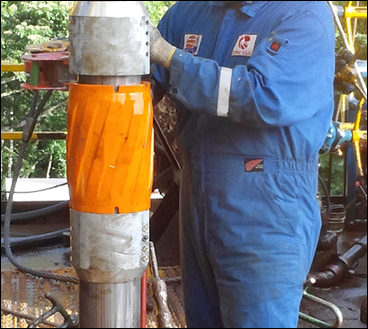CASE STUDIES
 |
|
Challenging Horizontal Well with Expected Casing Wear
|
Casing Protection
& Heat Checking Prevention Due to Non-Rotating Protectors |
18% Torque Reduction After Installing WWT
Non-Rotating Protectors |
||
|
A series of similar horizontal wells in the Middle East were drilled and showed significant wear on the 7" liner from kick off point (KOP) to liner shoe after drilling 6-1/8" sections with NRPs installed
|
An operator failed a 16" casing pressure test on a previous well due to excessive wear and probable heat checking. WWT's Non-Rotating Protectors (NRPs) were deployed for the next similar well as a solution to prevent further incidences by protecting the casing on multiple hole sections
|
An operator experienced high torque while drilling the 8-1/2" section of a 4km build-and-hold directional well. WWT performed torque and drag analysis to identify the major side force areas and decide the optimum placement for WWT Non-Rotating Protectors (NRPS)
|
||
|
Learn More |
Learn More |
Learn More |
||
|
Increased Casing Protection Measurably Reduces Metal Collected
|
No Casing Wear Detected After More than 9 Months of Drilling in a HP/HT Well
|
|||
|
An operator required casing protection while drilling offshore development wells in 1, 100m of water. The 1/2-¼" X 14-¾" and 9-½" sections were drilled with 5-⅞" range three (R3) drill pipe. Limited casing logging services were available to the operator. This required a pragmatic approach to casing protection by monitoring metal returns at the ditch magnets
|
The exploratory (HP/HT), onshore well was originally planned to be drilled to 6,500m total depth (TD), making it one of the deepest wells in the country. In addition, the historically low ROP of 1 m/hr and long exposure of production casing to drill pipe rotation caused a concern for casing wear. WWT Non-Rotating Protectors (NRPs) were deployed as a solution
|
|||
|
Learn More |
|
|||





